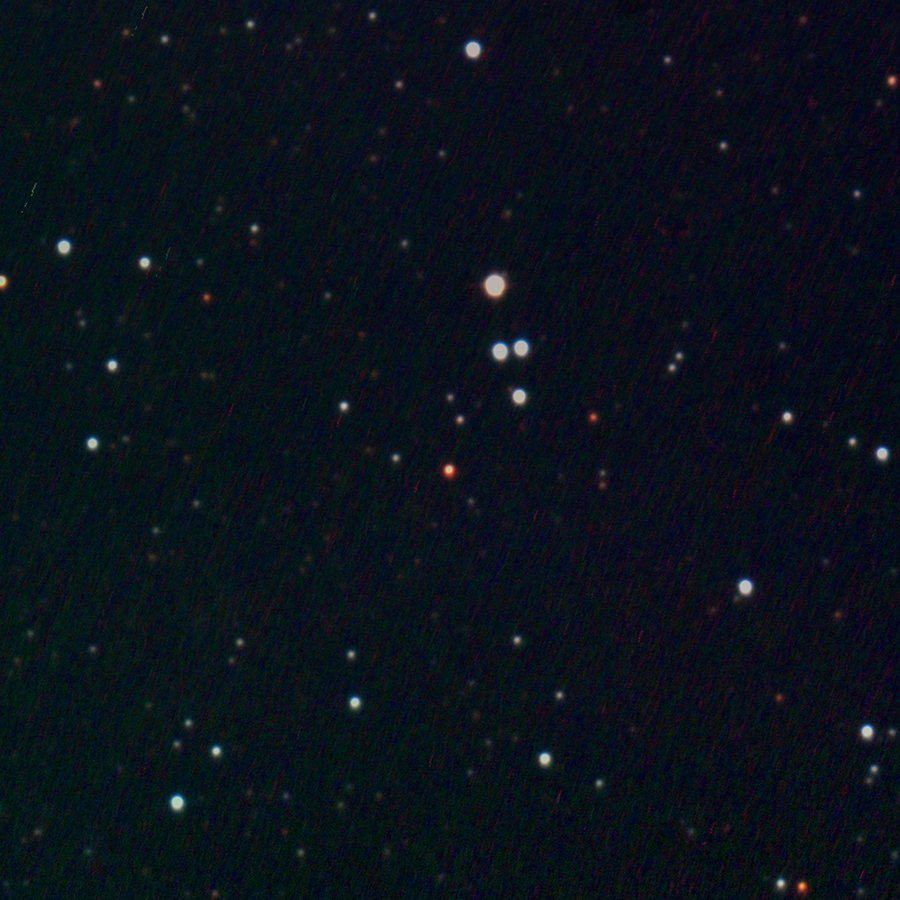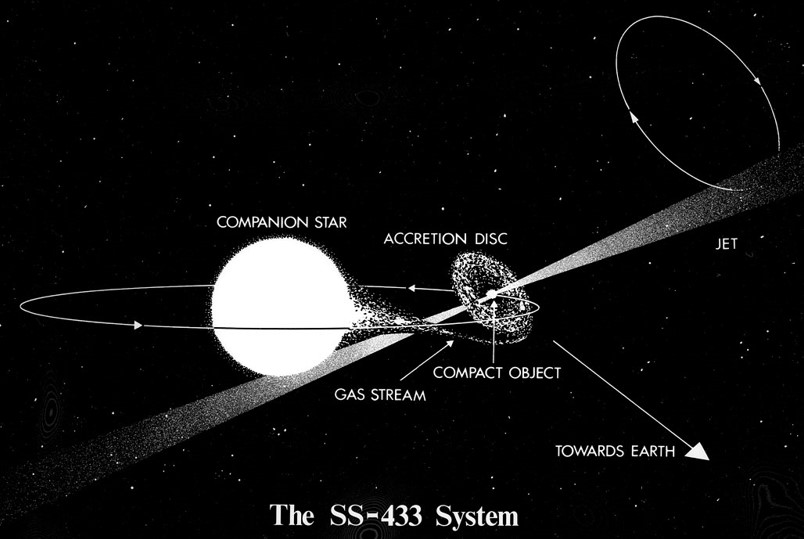SS433 Microquasar in Aquila
A very unusual binary system. Spectra taken show short period changes.

Image:
S.Broadbent, HAG 24" RC, Canon 5D, 18 x 2min, ISO 3200
|
SS433 (aka: V1342 Aql, K16 ... and others) is the faint orange object in the centre of the image which is about 9 arcmin square.
In 1977 Case Western Reserve University astronomers Bruce Stephenson and Nick Sanduleak listed it as the 433rd object in their catalog of objects with emission lines in their spectra. It is a microquasar eclipsing binary system consisting of a large, hot, massive star and a stellar sized black hole. It lies in supernova remnant Westerhout 50 (W50, the Manatee nebula). It varies in magnitude fron 12.5 to 15.2 (data from AAVSO)
Image:
ESO - https://www.eso.org/public/images/eso9107b
|
The peaks in its spectrum vary with time in both intensity and position due to Doppler and relativistic effects caused by several processes:
|
4 / 27
